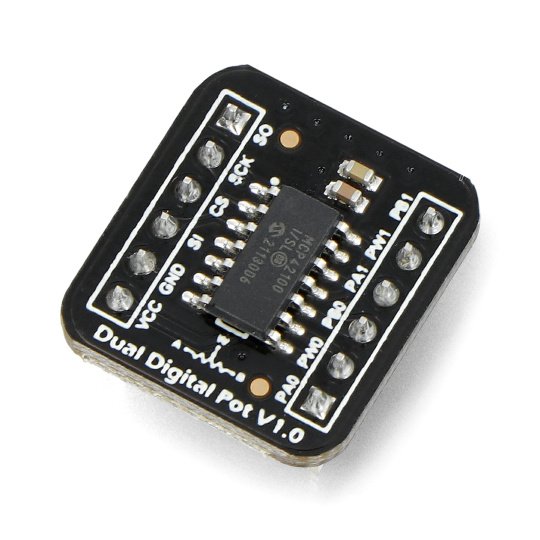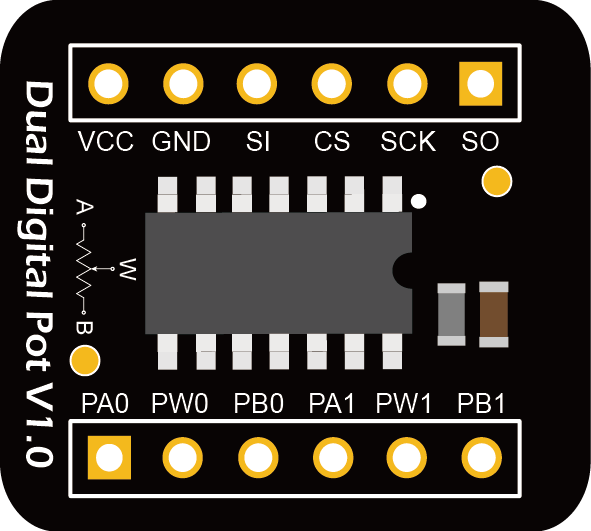Description
The digital potentiometer is a type of mixed IC signal which is able to dynamically change the internal resistors via MCU. It can be used for applications such as dimming of the LEDs, a stable source of line voltage, the oscillator, the low pass filter or a differential amplifier. It has a resistance of 100 kΩ. The digital potentiometer can replace the traditional, analog one in many applications, it can be used, for example, to change the volume in audio devices such as a smart speaker, mobile phone and music player.
Connection
Thanks to the suitable draft of the circuit of the operational amplifier, a digital potentiometer can be used to dynamically adjust various key parameters of the circuit such as the dimming of the LED, an oscillator, and so on. It uses the built-in MCP42100 with two individual digital potentiometers of 100 kΩPOT0 and POT1. Each potentiometer has 256 steps with a resistor of 100kΩ. It supports supply voltage from 2.7 V to 5.5 V, compatible with MCU 3.3 V and 5 V.
An example of wiring diagram with DFRduino Uno board.
Pins
The module communicates via SPI interface. The supply voltage ranges from 2.7 V to 5.5 V.
| PIN | Description |
|---|---|
| VCC | Supply voltage from 2.7 V to 5.5 V. |
| GND | Ground. |
| SI | Serial output of data. |
| CS | Chip Select. |
| CCS | A serial clock output. |
| SO | Serial input of data. |
| PAx | Potentiometer terminal A (x=0,1). |
| ATS | Potentiometer terminal B (x=0,1). |
| PWx | Potentiometer wiper terminal (x=0,1). |
Specification
- Supply voltage: from 2.7 V to 5.5 V DC
- Static current: 1µA
- Resistance: 100 kΩ
- Resolution: 8 B, 256 steps for each potentiometer
- Number of potentiometers: 2
- Interface: SPI
- Working temperature: from -40℃ to 85℃
- Dimensions: 20 x 18 mm
Useful links |























































































































































































































































































































































